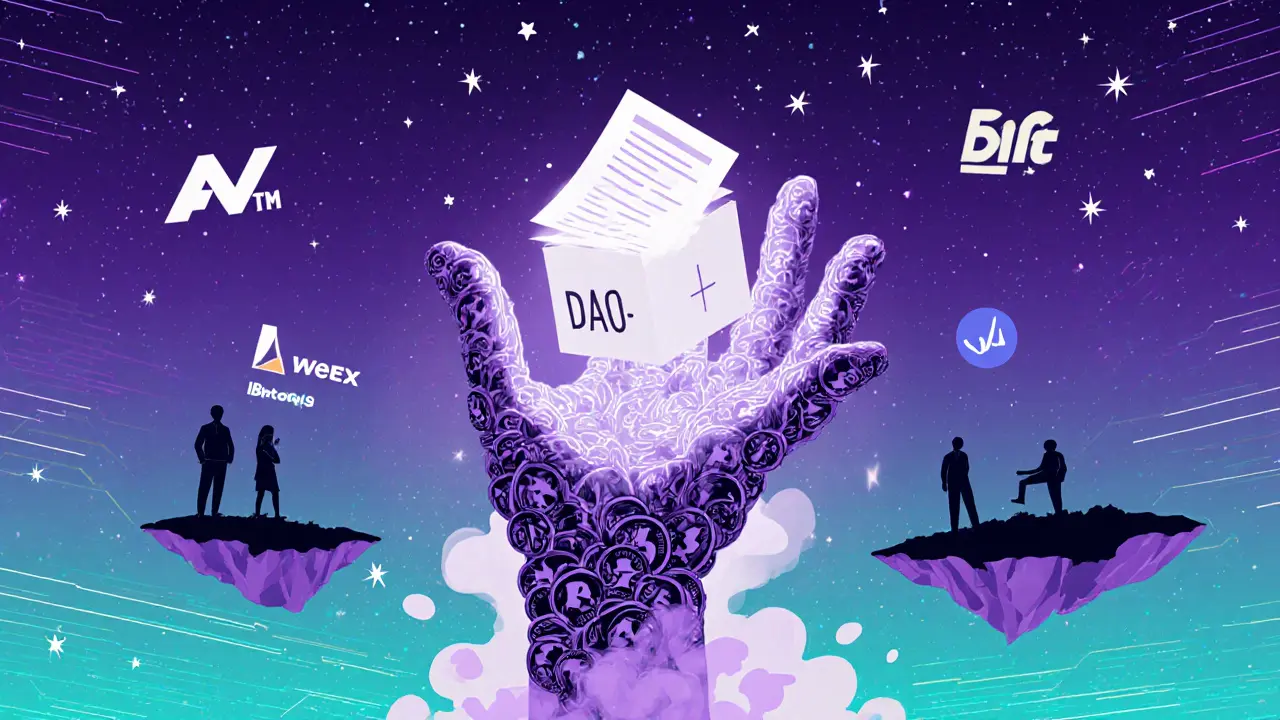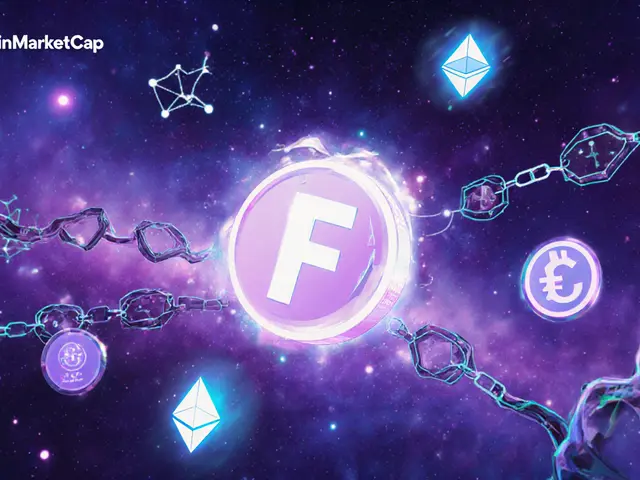Apertum Tokenomics Calculator
Apertum uses a deflationary tokenomics model where a portion of every transaction fee is burned, permanently reducing the total supply. With a fixed maximum supply of 2.1 billion APTM and only 14.5 million currently in circulation, this model creates scarcity over time. This calculator shows how transaction fees impact supply reduction.
Tokenomics Results
Note: This calculation assumes constant transaction volume and burn rate. Actual supply reduction may vary based on network activity.
Apertum (APTM) isn’t just another crypto coin. It’s a Layer 1 blockchain built directly on the Avalanche network as a custom subnet, designed to handle real-world decentralized apps with speed, low cost, and long-term sustainability. Unlike many tokens that exist only as ERC-20 assets on Ethereum, Apertum runs its own independent chain with its own rules, validators, and economy. If you’ve heard of Avalanche, you’ve heard of the platform Apertum is built on - but Apertum is one of its most ambitious subnets yet.
How Apertum Works: Built on Avalanche, Not Just Another Token
Apertum doesn’t compete with Ethereum or Bitcoin. It works alongside them. It’s a subnet - a specialized blockchain - that uses Avalanche’s consensus protocol to achieve fast finality and high throughput. That means transactions settle in under a second, and fees stay tiny. While Ethereum might charge $1.27 per transaction on average, Apertum’s average gas fee is just $0.0012. That’s over 100 times cheaper.
What makes Apertum stand out is its EVM compatibility. If you’re a developer who’s built smart contracts on Ethereum, you can deploy them on Apertum with almost no changes. This lowers the barrier for projects looking to scale without losing compatibility with the massive Ethereum ecosystem. Apps like DeFi protocols, NFT marketplaces, and gaming platforms can move to Apertum and keep their existing codebase while enjoying faster speeds and lower costs.
Tokenomics: A Deflationary Model with a Hard Cap
Apertum’s token, APTM, has a fixed maximum supply of 2.1 billion coins. That’s the same total supply as Bitcoin - a deliberate design choice to signal scarcity and long-term value. But here’s the twist: Apertum burns a portion of every transaction fee. That means the total supply of APTM slowly decreases over time. Unlike coins that keep printing new tokens, Apertum’s supply shrinks. This is called a deflationary model, and it’s rare among newer blockchains.
The 2.1 billion APTM aren’t all in circulation. Two billion are being released gradually through mining events called halvings, which happen at set intervals. This controlled release prevents sudden inflation and gives the community time to absorb new tokens into the economy. As of late 2023, only about 14.5 million APTM were in circulation - less than 1% of the total supply. That means most of the tokens are still locked in the mining schedule, waiting to be released over years.
Who Runs Apertum? No VCs, Just the Community
One of Apertum’s biggest differentiators is its governance. There are no venture capital firms pulling strings. No big investors controlling the roadmap. Instead, Apertum is run by a decentralized autonomous organization (DAO). Anyone who holds APTM can propose changes, vote on upgrades, or suggest new features. This isn’t just a marketing claim - it’s baked into the protocol.
Community members have already voted on key decisions like fee structures, treasury allocations, and development priorities. This model makes Apertum more resilient to market swings. When prices drop, projects backed by VCs often cut development. Apertum keeps going because the community believes in the long-term vision. It’s a bottom-up approach, not top-down.

Market Data: Why Prices Vary So Much
If you look up APTM’s price, you’ll find wildly different numbers. CoinGecko says it’s around $0.39. Bitget lists it at $1.08. TradingView shows $2.79 - but that date is from 2025, which hasn’t happened yet. So what’s going on?
The confusion comes from data sources. Some exchanges report prices based on their own order books, which can be thin for smaller coins. Others aggregate across multiple platforms. CoinGecko is generally considered the most reliable because it filters out fake volume and uses only verified trading pairs. As of November 2023, the most consistent figures showed:
- Price: $0.39-$1.08 (depending on exchange)
- Circulating supply: 14.5 million APTM (CoinGecko)
- Market cap: $21.8 million (TradingView)
- 24-hour volume: $930K (CoinGecko)
- All-time high: $1.97 (Bitget)
- All-time low: $0.72 (Bitget)
These numbers aren’t just random. They reflect the reality of a mid-tier crypto project: moderate liquidity, limited exchange listings, and a small but growing user base. Apertum isn’t in the top 100 coins by market cap - it’s around #965 on TradingView - but it’s one of the top 7 subnets on Avalanche by transaction volume.
Where You Can Trade APTM and How People Use It
The only major exchange listing APTM is WEEX, which announced its listing in November 2023. WEEX serves over 6 million users across 130 countries, so this was a big step for Apertum’s visibility. Bitget also lists it, but with less volume. Most trading happens on these two platforms.
People use APTM in three main ways:
- Staking: You can lock up APTM on Bitget and earn around 8.7% APY. That’s higher than most major coins.
- Trading: Due to price differences between exchanges, some traders use APTM for arbitrage - buying low on one platform and selling high on another.
- Payments: A few decentralized apps built on Apertum accept APTM for services, especially in gaming and DeFi.
But here’s the catch: liquidity is still thin. On decentralized exchanges like Uniswap or PancakeSwap, you won’t find APTM. It’s only on centralized platforms. That means if you want to buy or sell, you’re relying on a few exchanges with limited order books. Spreads can be wide - sometimes over 5% - making small trades expensive.

Developer Experience: Easy for Ethereum Builders
If you’re a developer, Apertum is one of the easiest blockchains to join. Because it’s EVM-compatible, you don’t need to learn a new programming language or rewrite your contracts. Just update the network settings in your wallet (like MetaMask) and deploy. Apertum’s GitHub repo has clear documentation, and the average gas fee is a fraction of Ethereum’s.
There’s also active community support. The official Telegram group has nearly 5,000 members, and the Discord server has over 2,300. But don’t expect instant answers - technical support takes an average of 8 hours to respond. That’s slower than major chains, but expected for a smaller project.
What’s Next? The Roadmap and Future Potential
Apertum’s roadmap is focused on expansion. The biggest upcoming feature is a cross-chain bridge to Ethereum and BNB Chain, with beta testing scheduled for January 2024. That would let users move tokens between Apertum and these larger networks - a huge boost for adoption.
Analysts at Delphi Digital estimate a 65% chance Apertum will become a top 5 subnet on Avalanche by late 2024. That’s not a guarantee, but it’s a realistic outlook if the bridge launches smoothly and the community keeps growing.
Right now, Apertum is in a fragile but promising stage. It’s not a giant, but it’s not a ghost either. It has real users, real transactions (over 6.1 million so far), and a clear technical edge. The question isn’t whether it’s a good coin - it’s whether enough people will build on it to make it sustainable.
Is Apertum Worth Your Attention?
Here’s the bottom line: Apertum isn’t for speculators looking for quick pumps. It’s for people who care about blockchain infrastructure - developers, long-term holders, and community-driven projects.
If you want to:
- Build a dApp with low fees and fast speed
- Hold a token with a shrinking supply and no VC control
- Support a blockchain that’s actually trying to solve scalability without sacrificing decentralization
Then Apertum is worth watching. It’s not a sure win, but it’s one of the few projects in the Avalanche ecosystem that’s built for the long haul - not the next hype cycle.
Is Apertum (APTM) a good investment?
There’s no simple yes or no. Apertum has strong technical foundations - deflationary tokenomics, low fees, EVM compatibility, and community governance. But it’s still a small project with limited liquidity and few exchange listings. It’s not a safe bet like Bitcoin or Ethereum. It’s a high-risk, high-potential play for those who believe in its long-term vision. Only invest what you can afford to lose.
Where can I buy APTM crypto?
As of late 2023, the only major exchanges listing APTM are WEEX and Bitget. You won’t find it on Coinbase, Binance, or Kraken. To buy APTM, you’ll need to register on one of these platforms, deposit funds, and trade for APTM directly. Always double-check the trading pair and fees before confirming a trade.
Why are APTM prices so different across websites?
Different platforms use different data sources. Some show prices from thin order books, others average across exchanges. CoinGecko is the most reliable because it filters out fake volume and uses verified trades. Prices on Bitget or TradingView may reflect temporary spikes or outdated data. Always check multiple sources and prioritize CoinGecko for accurate market data.
Can I stake APTM and earn rewards?
Yes. Bitget offers a staking program for APTM with an average yield of 8.7% APY as of November 2023. This is one of the highest yields available for a mid-tier crypto. You lock your APTM for a set period, and you earn more tokens in return. It’s not staking in the traditional blockchain sense - it’s a centralized exchange offering. Always read the terms before locking funds.
Is Apertum built on Ethereum?
No. Apertum is its own blockchain - a subnet on the Avalanche network. But it’s EVM-compatible, meaning it can run Ethereum smart contracts without changes. So while it’s not part of Ethereum, it works with it. This lets developers move projects from Ethereum to Apertum easily, keeping their code while gaining speed and lower costs.
What makes Apertum different from other Avalanche subnets?
Apertum stands out because it’s the only major Avalanche subnet with a fully decentralized DAO, no VC funding, and a deflationary token model. Most subnets are backed by big teams or institutions. Apertum is community-run. It also has the highest transaction volume among non-gaming subnets on Avalanche, making it a serious contender for general-purpose use beyond just DeFi or NFTs.






